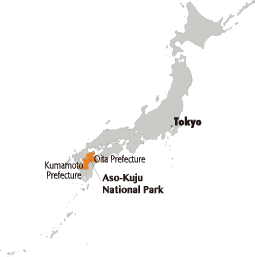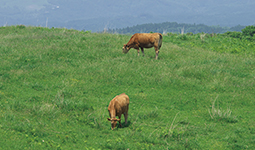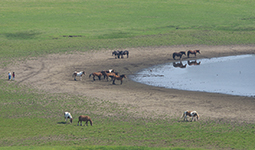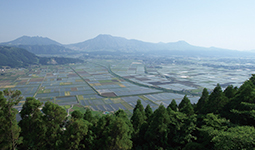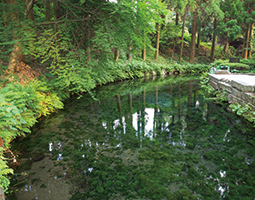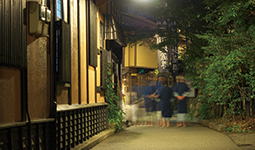Home > Highlighting JAPAN > Highlighting Japan June 2017 > National Parks
Highlighting JAPAN
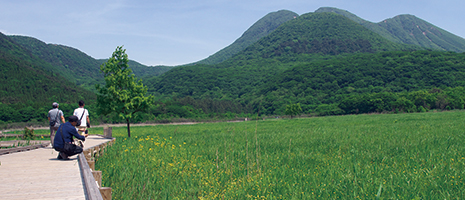
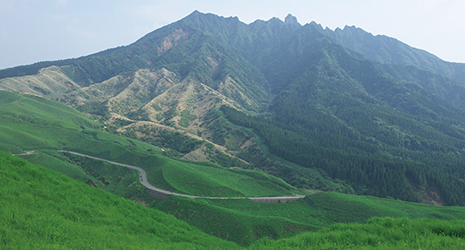
- PREVIOUS
- NEXT
Aso-Kuju: The Power of Nature
For the first article in a new series introducing Japan’s thirty-four designated National Parks, we visited volcanic Aso-Kuju on the island of Kyushu.
Driving is not just the best way to enjoy the vast Aso-Kuju National Park in central Kyushu; it is in itself a singular pleasure. The roads here are smooth, curvy and uncongested, and lead the motorist through some of the most beautiful and distinctive countryside in all Japan.
Aso-Kuju National Park is named after volcanic Mt. Aso and the Kuju mountain range, but the visitor’s first taste of the park is pastoral. Five minutes’ drive from Kumamoto Airport puts the traveler on Milk Road, where Jersey cows and Japanese Browns graze blissfully on the rolling grasslands.
Milk Road runs along a section of the outer rim of the huge Aso caldera — the world’s largest — which formed here some 90,000 years ago after repeated eruptions finally drained the magma chamber and caused the ground to collapse. The five peaks of the still-active Mt. Aso take center stage in the caldera basin and can be viewed from numerous designated observation points along the rim.
One of the most spectacular views is that across the Kusasenrigahama plain, a former crater, with the peak of Mt. Nakadake venting smoke in the near distance. Owing to the continued risk of volcanic activity following the explosive eruption of October 2016, Mt. Nakadake’s lake-filled crater is closed to visitors at this time.
A close-up volcanic experience can nevertheless still be had in a variety of ways within the park. At Komatsu Jigoku (Komatsu Hell), for example, sulfurous steam rises amid the stubby pine trees as water and mud bubble angrily in pools at the surface of the wood’s rocky terrain.
By contrast with the “hell” of Komatsu Jigoku, Tadewara Marshland delivers a most heavenly encounter with nature. Through an annual process of mowing and controlled burning of old plants over a period of more than a thousand years, a rich and rare biota peculiar to this area has been nurtured and maintained. The marshland was designated as a wetland of international importance under the Ramsar Convention in 2005. A boardwalk accessed via the Chojabara Visitor Center leads the walker over the vast marsh through a forest trail and into the mountains beyond.
There are many excellent walking and climbing courses in this neck of the woods.1 The three-hour hike up Mt. Ogigahana would be one to recommend most highly in June, as wild Kyushu azaleas blanket the mountain’s slopes and foothills with their distinctive pink flowers.
At Shirakawa Suigen fountainhead, cold spring water bubbles quietly into a pristine collection pool at a rate of sixty tons a minute before spilling over the edges and rushing away to form the head of the Shirakawa river.
But for total immersion and appreciation of the joys of this volcanic landscape, nothing can beat a hot spring bath. There are many onsen hot-spring resort towns in the Aso-Kuju area, from the quaint and upscale Kurokawa Onsen to the gloriously ramshackle Tsuetate Onsen. Soaking in hot water at the end of a long day in the park, the weary traveler is moved to reflect on the remarkable diversity and power of nature.
- PREVIOUS
- NEXT
© 2009 Cabinet Office, Government of Japan
